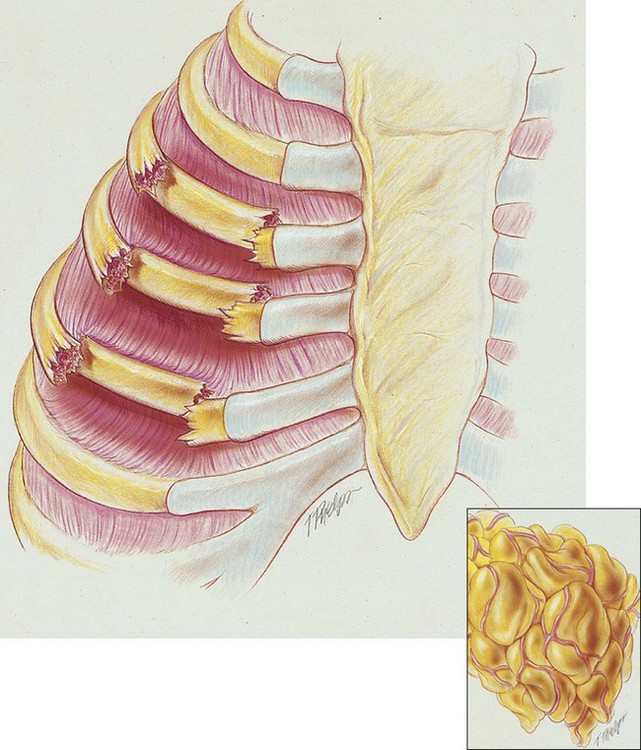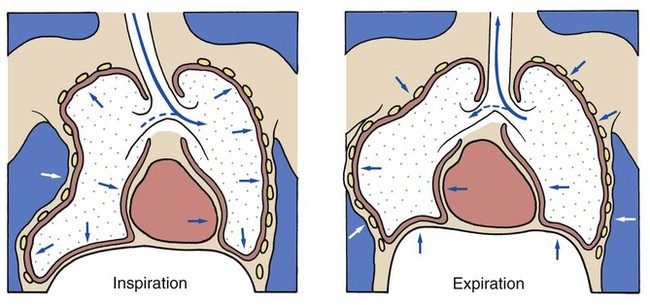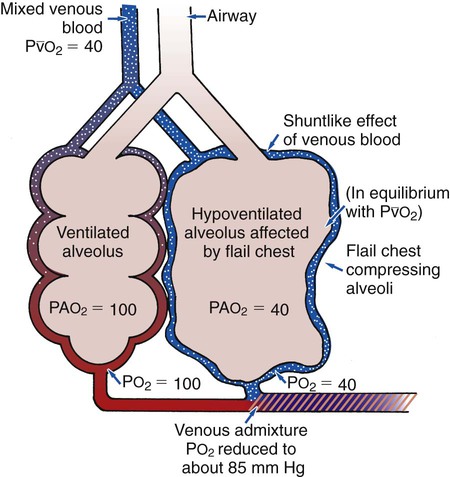After reading this chapter, you will be able to: • List the anatomic alterations of the lungs associated with a flail chest. • Describe the causes of a flail chest. • List the cardiopulmonary clinical manifestations associated with a flail chest. • Describe the general management of a flail chest. • Describe the clinical strategies and rationales of the SOAPs presented in the case study. • Define key terms and complete self-assessment questions at the end of the chapter and on Evolve. A flail chest is the result of double fractures of at least three or more adjacent ribs, which causes the thoracic cage to become unstable—to flail (see Figure 21-1). The affected ribs cave in (flail) during inspiration as a result of the subatmospheric intrapleural pressure. This compresses and restricts the underlying lung area and promotes a number of pathologies, including atelectasis and lung collapse. In addition, the lung also may be contused under the fractured ribs.
Flail Chest
Anatomic Alterations of the Lungs



 ratio decreases. This leads to intrapulmonary shunting and venous admixture (
ratio decreases. This leads to intrapulmonary shunting and venous admixture (



